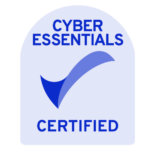IT support has become paramount for businesses in the UK, particularly for ones in large city centres like London. Whether it’s for startups, law firms or retail chains, streamlining operations and minimising system downtimes is important for any business. This is where IT Support Service Level Agreements (SLAs) come into play. They clarify the understanding between the customer and the service provider.
What is the SLA for IT support?
SLAs are contracts that are mutually agreed on between the company and the IT support provider. These contracts stipulate the range of services to be provided, the required level of service by the provider and the expectations of each party. It is a contract that, in the simplest of terms, delineates a business’s IT support provider’s service obligations.
What Are The Two Key Components of an SLA?
The service standards and the accountability measures are two main components of any SLA. The level of service promised by the provider, as well as the response speed, is defined by the service standards. Accountability measures determine the course of action that will be undertaken once the defined standards have not been met. In such instances, the service provider could be issued some form of penalisation or possibly some form of reimbursement.
What Does a Good SLA Look Like?
An SLA should be fine-tuned to your business, free of unnecessary complexity and properly defined to avoid any ambiguity. It has to establish responsive target times, reasonable operational goals and practical flexibility that adjusts to company growth or changes in IT needs. Most importantly, it avoids complexity and doesn’t allow any confusion.
What Should You Look for in an IT Support SLA?
An SLA outlines the obligations the IT provider has to the client while putting reasonable, definable limits on the standards of the SLA, as well as the response time and availability. It should be fully adjustable to the unique requirements of the client’s business.
Response Times
Be sure that the SLA indicates the time it will take your IT provider to respond to issues. From critical outages to minor problems, your provider should be readily available to ensure no downtime.
Resolution Times
Look for commitments not just in response, but on how quickly problems will actually be resolved. This can vary by severity level, but clear targets should be set.
Availability and Uptime Guarantees
If your business runs around the clock, then the SLA should incorporate some form of commitment on uptime (such as 99% system availability) to ensure your IT systems can be accessed. The SLA should specify the IT system availability targets.
Communication and Escalation Procedures
Ensure that the SLA stipulates how and where updates will be sent and how issues will be escalated if they are not resolved in a timely manner.
Performance Metrics
Look for specific, quantifiable service benchmarks such as call-answering speed, tickets closed and network supervision.
Support Coverage Hours
Confirm the SLA accounts for actual business hours, which could be 9-5 weekdays, 24 hours a day for 7 days a week. If relevant to your business, you might want to check their bank holiday availability.
Security and Compliance
A robust SLA can define how the IT vendor protects sensitive information as well as compliance with the UK’s legal regulations, such as GDPR and Cyber Essentials.
Proactive Monitoring and Maintenance
Check whether the vendor only addresses problems or includes continuous monitoring to ensure preventative measures are taken to divert potential risks before they occur.
Disaster Recovery and Backup
The SLA should expressly state how backups are performed and the measures in place for swift recovery in the event of severe issues, to minimise downtime.
Penalties and Remedies
The SLA should explain what the service credits and discounts are, as well as how the contract will be revised for not meeting performance levels.
Flexibility and Scalability
Confirm that your SLA can grow with your business, allowing support levels to grow in tandem with the company or adjust to changing tech requirements.
Termination and Exit Terms
Examine carefully the exit terms with the provider being switched, including the provision of fines, assistance with the transition and termination notification period.







